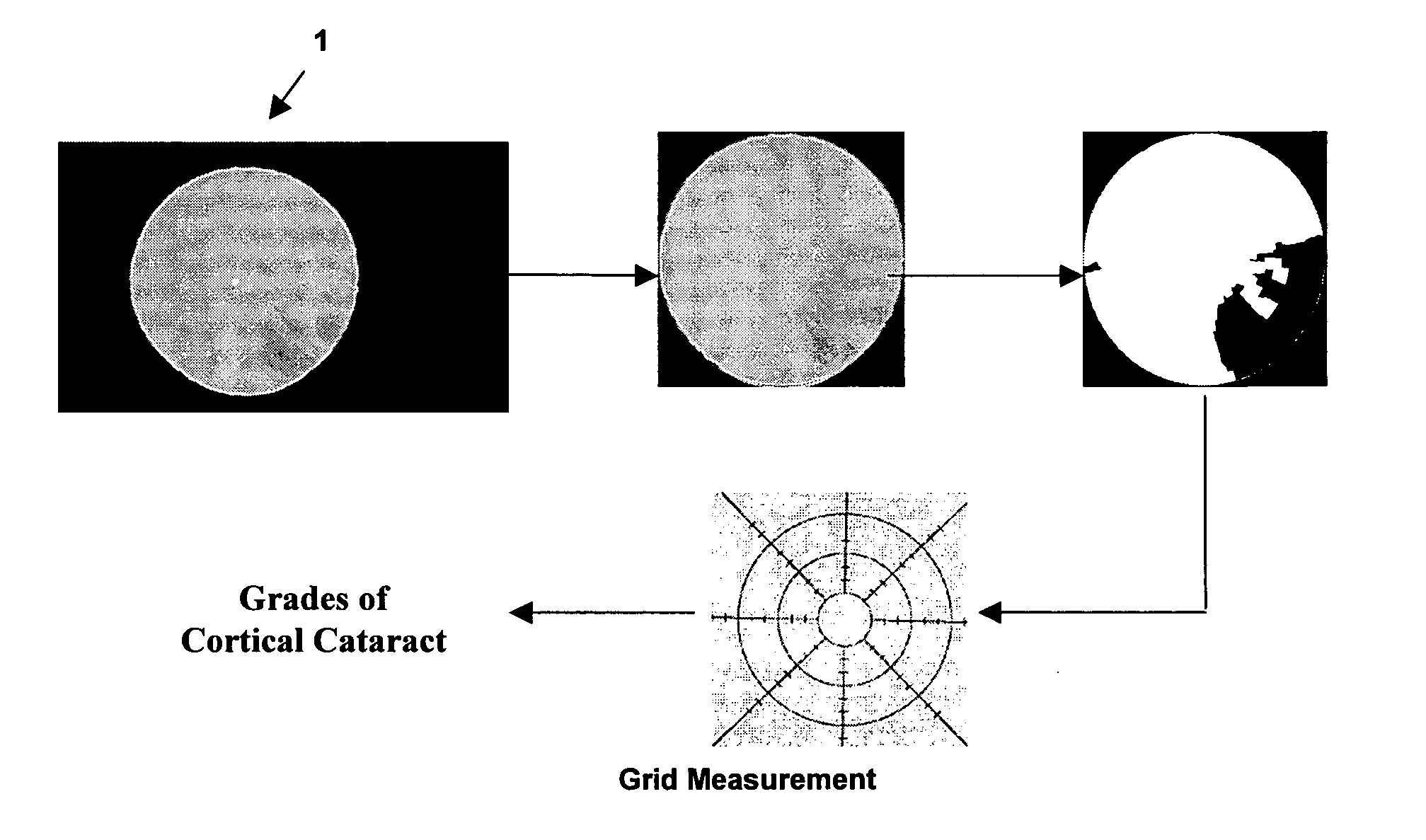Automatic opacity detection system for cortical cataract diagnosis
- Summary
- Abstract
- Description
- Claims
- Application Information
AI Technical Summary
Benefits of technology
Problems solved by technology
Method used
Image
Examples
Embodiment Construction
[0036]Referring to FIGS. 1 and 2, the steps are illustrated of a software system which is an embodiment of the present invention, and which extracts from lens images the cortical opacity, and grades it. FIG. 1 is a flow diagram of these steps, while FIG. 2 shows the steps schematically, with reference to images representing the results of each step of the process. Corresponding steps of FIGS. 1 and 2 are indicated by the same reference numerals.
[0037]The input to the embodiment is an optical image 1, containing a light approximately-circular region which is a pupil, surrounded by a dark border. Opacity is indicated by the darkened region of this pupil.
(i) ROI detection (step 10)
[0038]A first step of the method (step 10) is ROI Detection, the sub-steps of which are illustrated in FIG. 3. In a first sub-step 11, the original image 1 is filtered by a Laplacian edge-detection filter and thresholded to obtain the Laplacian edges (a well know algorithm).
[0039]In a second sub-step 12, cann...
PUM
 Login to View More
Login to View More Abstract
Description
Claims
Application Information
 Login to View More
Login to View More - R&D
- Intellectual Property
- Life Sciences
- Materials
- Tech Scout
- Unparalleled Data Quality
- Higher Quality Content
- 60% Fewer Hallucinations
Browse by: Latest US Patents, China's latest patents, Technical Efficacy Thesaurus, Application Domain, Technology Topic, Popular Technical Reports.
© 2025 PatSnap. All rights reserved.Legal|Privacy policy|Modern Slavery Act Transparency Statement|Sitemap|About US| Contact US: help@patsnap.com



